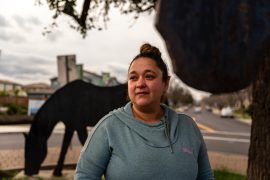There aren’t many investments people make to protect themselves against something that may happen 20 or 30 years down the road. Yet that’s exactly what long-term care insurance purchasers do. But a provision in those policies that people rely on to help ensure their coverage will meet their needs decades hence may do nothing of the kind.
The clauses are called “alternative plan of care” benefits. They’re intended to provide coverage for services that aren’t spelled out in the policy but may emerge in the future, says Bonnie Burns, a policy specialist at California Health Advocates, a Medicare advocacy and education organization.
Long-term care policies that were sold 30 years ago, for example, didn’t cover care in an assisted living facility, she says, even though such coverage is common now.
Long-term care insurance offers financial protection if a person needs help with daily tasks such as eating and bathing. Policies typically cover care provided in different settings, whether it’s a nursing home, a private home or an assisted living facility. People usually buy a policy that provides up to a specified daily dollar amount—say $150—for between three and five years.
Burns says that although alternative plan of care clauses can be beneficial, they are honored at the insurance company’s discretion.
“It’s completely up to the company,” she says. “I’ve had situations where companies have refused to pay under that benefit.”
Alternative plan of care clauses may be increasingly important. In the past decade, the average age at which people buy a long-term care insurance policy has decreased from 68 to 59, according to a survey by America’s Health Insurance Plans, a trade group.
When considering a policy, people have to ask themselves: “What’s the long-term care landscape going to look like in 20 years?” says Burns. An alternative plan of care clause may help provide some sense of security, but it’s no panacea.
KFF Health News is a national newsroom that produces in-depth journalism about health issues and is one of the core operating programs at KFF—an independent source of health policy research, polling, and journalism. Learn more about KFF.Some elements may be removed from this article due to republishing restrictions. If you have questions about available photos or other content, please contact khnweb@kff.org.



